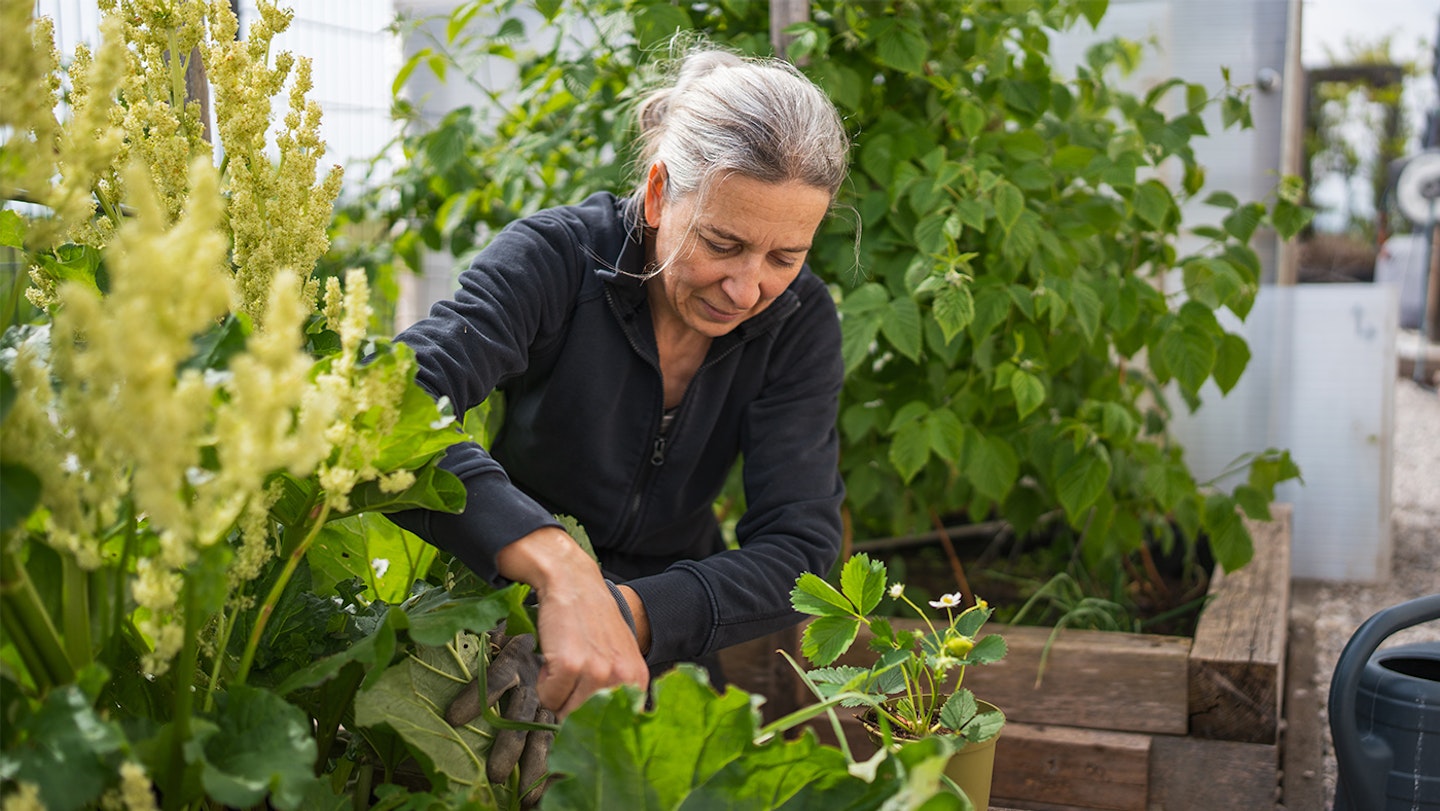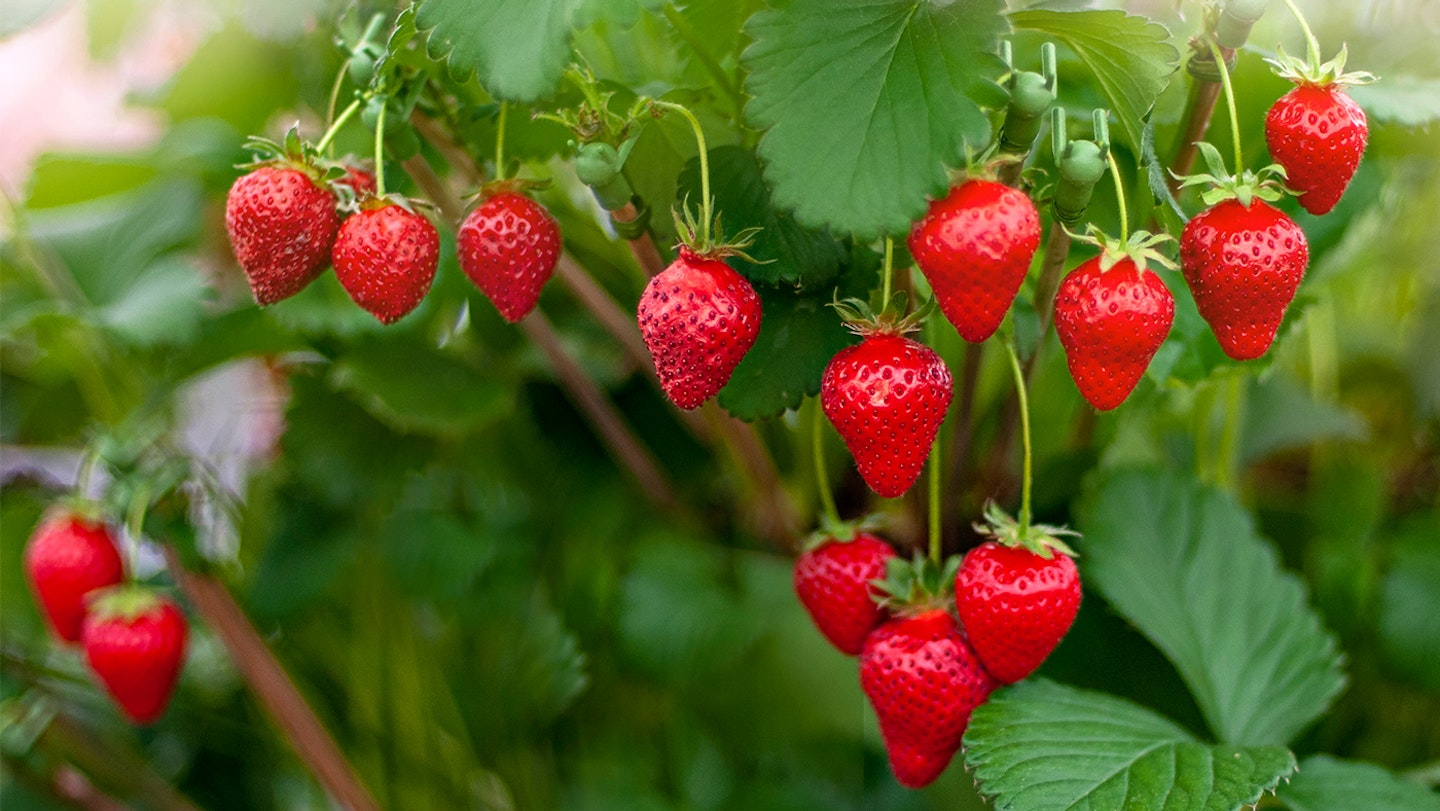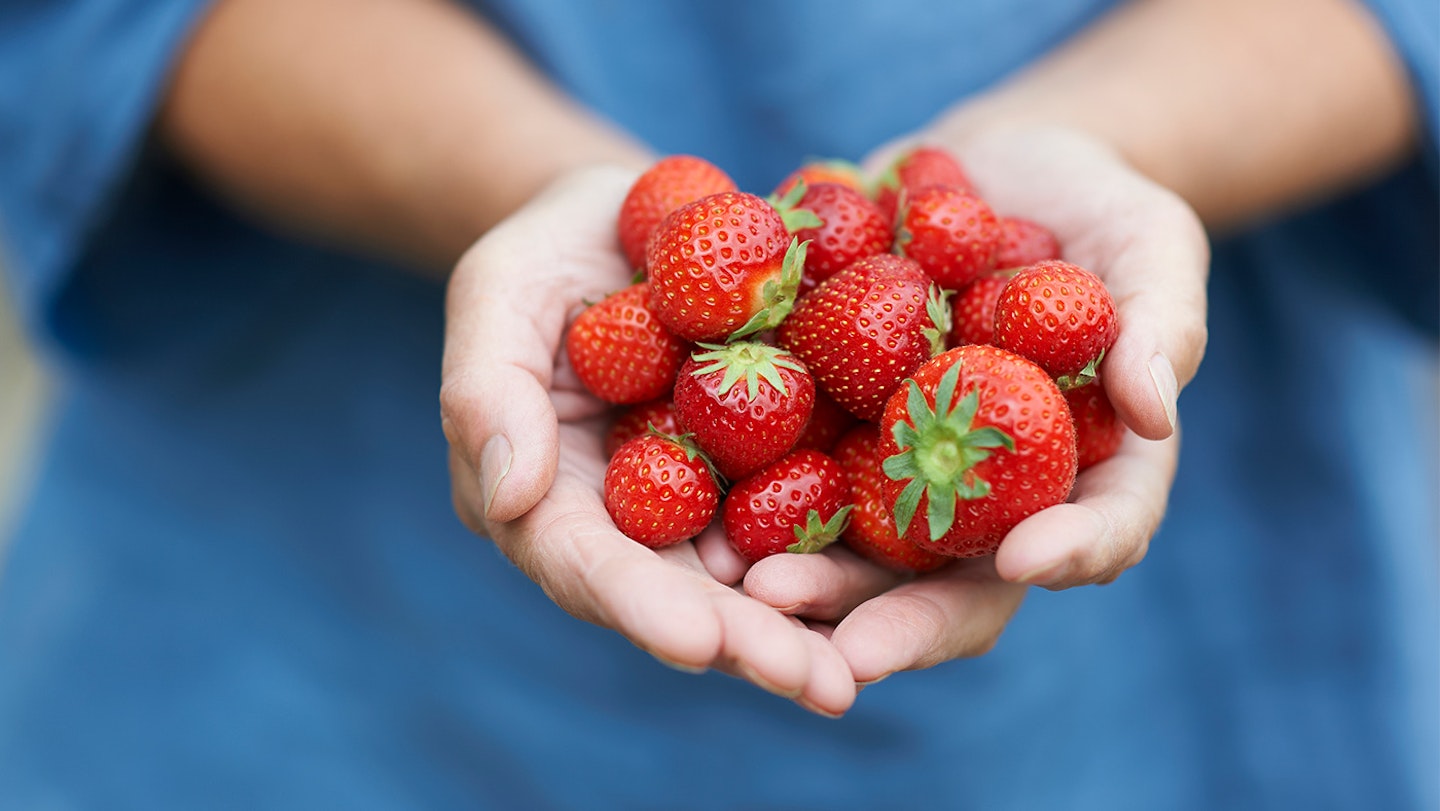If you enjoy tucking into strawberries and cream while watching Wimbledon or spreading strawberry jam on your toast in the morning, you may have wondered how to grow strawberries.
Sweet and delicious, strawberries are one of the most popular fruits to grow as they don't require much space and are fairly easy to plant and look after. If you're interested in finding out more, we spoke to stairlift and homelift company, Stannah’s gardening expert Mark Lane to get the lowdown.
What are the main types of strawberries?
There are 3 main types of strawberries:
The ‘June-bearing’ varieties crop once a year normally with a very large crop, predominantly in June depending on temperature and the climate. ‘June-bearing’ varieties can also be further classified into early, middle and late-bearing. It’s also important to remember that it will take several years for the plants to reach their optimum harvest.
The ‘perpetual’ or ‘ever-bearing’ varieties crop continuously in modest amounts from June through to September. These too will take several years to reach their optimum harvest.
The ‘day-neutral’ varieties crop three times a year – early June, mid-July and late August with modest crops. Unlike the ‘June-bearing’ and the ‘perpetual’ these will produce fruit from the first year onwards and are normally grown by commercial growers as the plants are treated like annual plants, i.e. removed at the end of the season and replaced the following year.
There are also ‘alpine strawberries’ that produce small crops of tiny, aromatic fruit intermittently during summer. Most strawberry plants will need to be replaced after 5-6 years, as they will stop bearing fruit.
When to plant strawberries
The best time to plant strawberries is in the autumn (September and October) before the ground gets too cold and/or waterlogged by winter rains. A second planting can be done in the spring (March and April; especially for ‘June-bearing’ varieties) if the weather in autumn is not preferable.

How to prepare the ground for strawberries
Strawberries are hungry plants so to get the best from your plants and to grow delicious crops you need to feed the plants by preparing the soil. Add c. 20 litres per square metre of well-rotted manure or homemade garden compost to garden soil. Sprinkling a general fertiliser that is high in potassium or potash will help develop flowers and fruit. Simply add this to the surface of the soil and work in with a garden fork or hand fork.
How to grow strawberries in the ground
You might see gardeners or allotmenteers growing strawberries through black weed-suppressant membrane to keep down weeds and retain moisture in the soil. Simply peg the membrane down to the surface of the soil and then cut slits where the strawberries are to be planted, ensuring you leave space between each plant. The membrane also prevents soil from splashing onto the leaves and fruit which could spread soil-borne diseases. If you do not have any membrane then mulch around the strawberries with straw or shredded paper.
How to grow strawberries in pots
Fill pots with a good peat-free multi-purpose compost and add a controlled-release general fertiliser. You can buy strawberry pots that have holes around the perimeter where a single strawberry plant is planted in each one, but standard pots, containers or grow bags will work just as well.
The advantage of growing fruit like strawberries in pots, containers and grow bags is that they prevent the build-up of soil diseases, as the soil can be replaced every year. Also, by using copper rings and other preventative measures, slugs and snails can be kept away from your prized fruits. Just keep an eye out for vine weevils in the soil (C-shaped grubs), as these will eat the roots of the strawberry plants and kill the plants.

How to grow strawberries in a greenhouse
The ‘June-bearing’, ‘day-neutral’ and ‘perpetual’ strawberries are grown from runners (clumps of roots with very little foliage) or young plants (normally sold as plug plants or in 9cm pots), which can be grown outdoors or indoors. The plants do, however, require at least 6 hours of sunlight to grow well.
The best variety to grow inside is the alpine strawberry, which can be bought as runners or grown from seed in a seed tray. It is a clump-forming variety and does not take up a lot of space. Give it the sunlight it requires and good airflow, by opening windows, doors and vents (if growing in a greenhouse) and feed with a controlled-release fertiliser that is high in potassium or potash once a month until the flowers start appearing, then feed every 10-12 days until the last crop of strawberries.
Advice for buying strawberry plants
When buying plants always look for the healthiest-looking plants. Good unblemished leaves, no sign of disease, especially grey mould covering the flowers. Remove the plant from the pot and check for signs of pests, such as vine weevils or slugs hiding under the leaves. Where possible, buy plants that you can see. If buying online, always purchase from a reputable, well-known grower or store.
How to care for strawberries
Just like many other plants, strawberries don’t like growing in waterlogged soils, as the plants will rot. It is important to have free-draining soil, but it needs to be kept moist daily, by watering a little every day. Strawberry plants have shallow root systems, which can dry out quickly if they get too hot and do not have enough moisture. A mulch of straw, shredded paper, membrane or back chippings will help retain moisture and protect the roots. If growing strawberries in pots this is a little easier, as any excess water can drain away.
When the plants are fruiting, they will require more water. The knack with whatever type of strawberry is to be methodical and to prevent erratic watering. Soaker hoses attached to an outside tap and a timer are a good option for watering. Cover the hose with a mulch and the water is directed exactly where the strawberry plants need it. Water earlier in the day and avoid soil splashing onto the flowers and fruits.
When it comes to feeding, add a controlled-release fertiliser high in potassium or potash once a month until the plants start flowering, then feed every 10-12 days and continue until the last crop of strawberries. Ensure you keep on top of weeds. A mulch will help with this. Weeds will compete for water and nutrients, so either hoe off the tops as soon as you see them or dig out weeds with a hand fork.
How long do strawberries take to grow?
Runners and young bareroot plants will grow and bear fruit in around 3 months. Planting in September and October gives the plants time to get their roots into the ground in search of soil-borne nutrients, air and water, so that by the time spring comes along the plant can put all of its efforts in growing above ground and then begin fruiting from June onwards. If growing strawberries (alpine in particular) from seed, it will not fruit until the second year.
When to harvest strawberries
Pick strawberries when they are bright red all over, from early summer to early autumn. Pick, where possible, during the warmest part of the day, as this is when sugars are high. Cup the fruit gently in your hand and then pinch off and twist.

Problems to watch out for
With any pest of disease, it’s good practice to act fast and as soon as you see signs of them. Diseases can affect every part of the plant. Many of the diseases are caused by bacteria, fungi or mould that are found in the soil. Leaves can discolour, get brown spots or blotches.
The two most common diseases include botrytis which attacks the fruit and flowers. The spores of this fungus will grow into the recognisable grey mould associated with strawberry growing. If growing indoors increase the temperature, which will discourage the fungus growth. If growing outdoors, ensure there is space between the plants, there is good airflow and the soil is not waterlogged.
The second most common disease is fusarium wilt, which can kill an entire crop. It will be seen as stunted growth, wilting leaves and discolouration of the crown. This is a soil-borne disease, so good crop hygiene is essential. Remove fallen dead leaves, roots, flowers or fruit regularly, plant varieties that are resistant to fusarium wilt, grow your strawberries in different areas each year, ensure homemade compost is fully decomposed and clean your tools regularly.
Pests, such as fruit flies, slugs, weevils, beetles, aphids, thrips and caterpillars can be a problem. Slugs can be attracted to beer traps, fruit flies, weevils and beetles to apple cider vinegar, aphids can be squashed between your fingers or fed on by birds, ladybirds or lacewings, caterpillars can be picked off by hand and thrips can be removed by rubbing your hands over the plants, wrapped in sticky tape with the sticky side outside. Companion plants can help deter pests. Avoid using pesticides.
About the expert
Mark Lane is a TV broadcaster of the award-winning BBC Gardeners’ World and the Royal Horticultural Society’s Flower Shows – Chelsea, Hampton Court Palace, Chatsworth, Tatton. He has gained recognition as a first-class landscape designer, being the UK’s first garden designer in a wheelchair, as well as the first BBC gardening presenter in a wheelchair.
